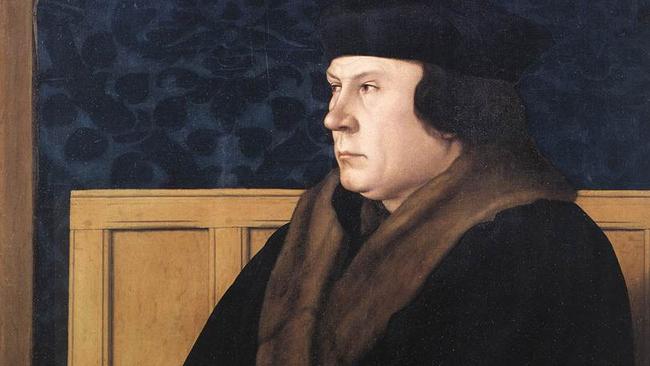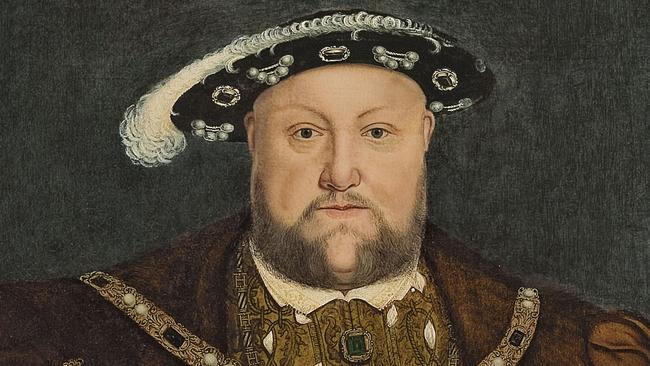How Henry VIII’s fourth wife Anne of Cleves survived to become his sister
Half a millennium ago a woman was born who would survive the murderous wrath of Henry VIII

Today in History
Don't miss out on the headlines from Today in History. Followed categories will be added to My News.
Although she played an interesting part in English history, the portrait of Anne of Cleves does not hang anywhere in Britain. To find it you need to make your way to the Louvre in Paris and wend your way through the works of German artists.
Anne’s portrait was painted by the great Germanic portraitist Hans Holbein, essentially as a way of showing King Henry VIII what she looked like. In the days before photography and Facebook an oil painting had to suffice.
The portrait shows a not unattractive woman, richly dressed, with sleepy eyes that stare out with what could be either mild defiance or indifference. Henry must have liked what he saw, because Anne was soon sent for and the couple were married on January 6, 1540. However, the story is often told that when Henry saw Holbein’s subject in the flesh he was less than pleased and the marriage was doomed to be brief. Luckily for Anne, if Henry was angry at being duped by a painting, he refrained from signing a death warrant for Anne. The marriage was annulled in July 1540, Anne was given a generous settlement and was treated as an honoured guest at court.
It is a particularly strange episode in the tumultuous and often strange love life of Henry VIII.
Anne of Cleves was born 500 years ago today, on September 22, 1515, in the Duchy of Cleves, in what is today the north of Germany on the border with the Netherlands. Her father was Johann III, duke of Juliers-Cleves.

Juliers-Cleves was technically part of the Holy Roman Empire but, like several other states within the Empire, it had its own army, conducted its own diplomacy and operated generally with a large measure of independence.
Cleves was influential among a group of states that were either fully Protestant or had large portions of Protestant population. Increasingly these states saw their destiny as separate from that of the Catholic Holy Roman Emperor. At the age of 12 Anne was betrothed to Francois, heir to the duchy of Lorraine
Johann III died in 1539, bringing Anne’s brother Wilhelm to the throne. At about that time King Henry VIII, who had split from the Catholic Church in 1532, was looking for a strong ally in Europe, amid fears that France and the Holy Roman Empire were preparing to attack England to oust Henry and replace him with a Catholic monarch.
In those times one of the major ways that alliances were forged was through the marriage of royal families. His most trusted adviser, Thomas Cromwell, advised him to marry again.
Henry was available, his third wife Jane Seymour having died giving birth to his heir (Edward VI) in 1537.
Cromwell sought a suitable bride. After Henry was rebuffed by the beautiful Princess Christina of Denmark (who later married Francois of Lorraine), Cromwell heard reports of the fairness of Anne, sister of Wilhelm duke of Juliers-Cleves.
He dispatched Henry’s favourite portrait painter, Holbein, to make a sketch of Anne and, seeing the result, Henry agreed to the match.
When Henry first saw Anne in person he thought she looked too plump and held up the wedding, questioning whether she may have still been betrothed to Francois and had therefore lost her virginity. Anne signed a document swearing she was not still betrothed to Francois and the marriage took place.
However, Henry later reported to Cromwell that he was having trouble consummating the marriage.

It may have been her appearance, lack of sophistication or the language barrier, but when the alliance between France and the Holy Roman Empire failed to eventuate, Henry felt he could dispense with a wife who had quickly become inconvenient.
The marriage was annulled on July 9 and Henry was free to pursue his latest flame, Catherine Howard.
Unluckily for Cromwell, he fell out of favour for having insisted on the marriage and for having discussed the king’s failures in the bedroom with Anne’s lord chamberlain. Cromwell was executed for treason on July 28.
Anne was officially given a position as the king’s sister, given a large income, a palace and a castle and allowed to visit Henry’s court. She outlived the king and all of his later wives, dying in 1557.
MANY WIVES OF HENRY VIII
Catherine of Aragon: Married 1509, divorced 1533, one surviving child Mary
Anne Boleyn: Married 1533 executed for treason 1536, one child, Elizabeth
Jane Seymour: Married 1536, died 1537, one child, Edward
Anne of Cleves: Married 1540, divorced 1540, no children
Catherine Howard: Married 1540 executed for treason
1542
Catherine Parr: Married 1543 outlived Henry
Originally published as How Henry VIII’s fourth wife Anne of Cleves survived to become his sister



